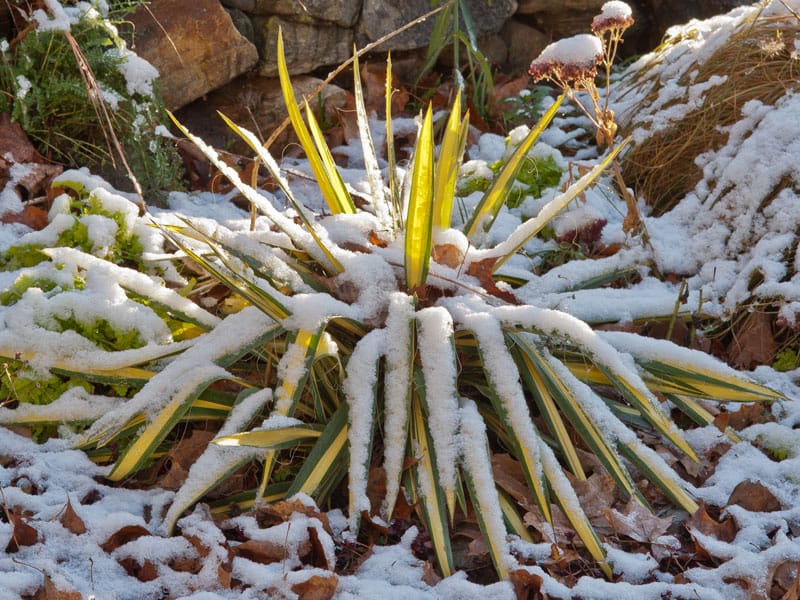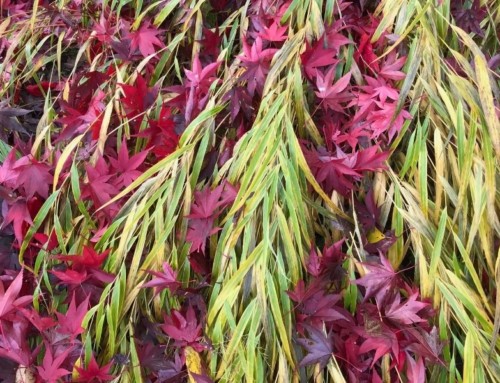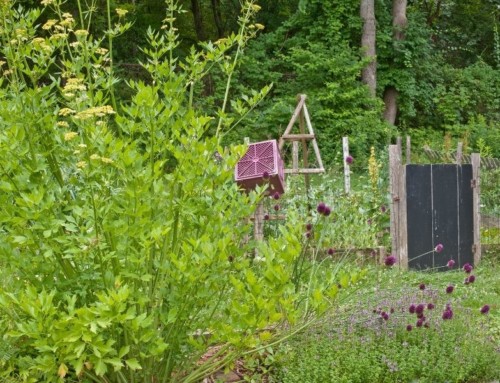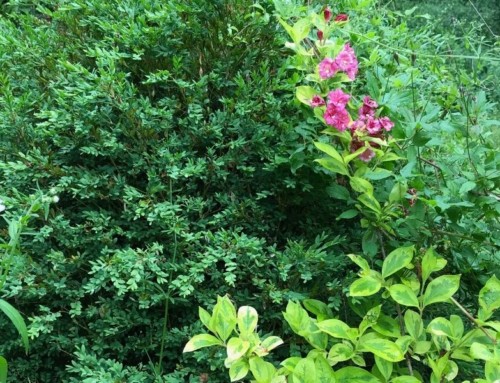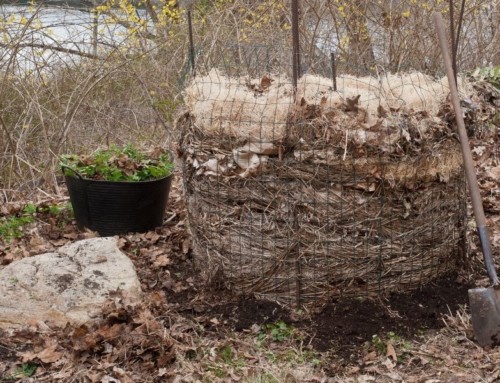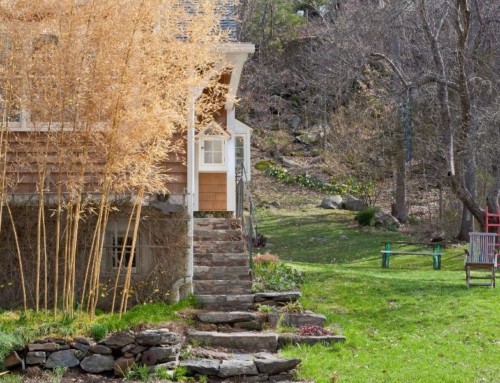How do we make gardens that still look like gardens in the winter? With so much wacky weather, we can’t count on a picturesque insulating blanket of snow covering garden beds. Evergreens, shrubs and trees with berries or interesting bark provide winter interest, but the ground carpet is what knits it all together. A sea of muddy mulch and frost heaves hardly does the trick.
Perennials don’t all disappear once frost hits. It’s worth scoping out what perennial foliage remains in your garden. Or visit a botanical garden in winter – the Irwin Perennial Garden at New York Botanical Garden is full of clues to use perennials in every season.
Take a look around – I’ll bet you find a few perennials that still have a presence. Some are pretty much evergreen, others turn color. Leathery leaves, silver foliage and basal rosettes often persist. Don’t expect perfection, just be glad that they’re there. Perennial foliage ties together woody plantings, provides a context for early spring bulbs and functions as a long-lasting, eco-friendly green mulch.
My talk, The Unsung Season: Gardens in Winter shows how to use these undervalued perennial “foul weather friends” to create winter garden beauty.
PERENNIALS THAT LOOK GOOD IN MY WINTER GARDEN
- Yucca ‘Golden Sword’: Technically a shrub, sold as a perennial. Clumps of wide green-striped golden blades look like rays of sunshine on the darkest days; strong silhouette against the snow.
- Acorus gramineus ‘Ogon’ – ‘Ogon’ means yellow in Japanese. 6-10” tufts of this grass-like iris relative inhabit damp places, where they form patches that shine on until spring.
- Christmas ferns (Polystichum acrostichoides) – Deep green, truly evergreen clumping native fern, grows in the deepest shade.
- Eastern wood fern (Polystichum marginalis) – Taller, more finely cut than Christmas ferns. They don’t always remain upright all winter, but look lovely (and still green) draped over rocky hillsides and ledges, the natural habitat.
- Plantain sedge (Carex plantaginea) – Mounds of wide sprightly green blades crinkled like seersucker, with burgundy-red new shoots in the center.
- ‘Brandywine’ Hellebores – Even if they didn’t delight me with 2-3 months of varied and exquisite winter-spring blooms, I would treasure these Lenten roses for super-attractive palmate foliage. A dozen plugs planted 20 years ago is now an evergreen ground-covering drift. Self-sown offspring pop up in unexpected, often undiggable nooks and crannies. Foliage looks great 10-11 months of the year,
- Penstemon ‘Husker’s Red’: – Basal rosettes turn a deep purple in winter.
THE PERENNIAL DIVA’S FAVORITE PERENNIALS FOR WINTER
Perennial expert Stephanie Cohen, (and co-author, with Nancy Ondra, of The Perennial Gardener’s Design Primer – more good winter reading) is funny, charming and absolutely ruthless. AKA “The Perennial Plant Diva,” she holds no truck with plants that don’t perform in the garden, however pretty they look in a catalog or nursery pot.
Her clear-eyed, uncensored evaluations are trustworthy, occasionally lacerating and frequently hilarious. Tiarella ‘Stephanie Cohen’, Hemerocallis ‘Stephanie Returns’, Phlox paniculata ‘Shortwood’ and other perennials named in her honor reflect the nursery industry’s high regard for her many contributions. Nobody would dare attach her name to a less-than superlative performer.
When I called to ask Stephanie what perennials still looked good in her Pennsylvania garden, her first thought was dry grasses, especially switchgrasses (Panicum spp.). “They’re big, they stand up straight, have a nice tawny color, and – they’re there. I can’t think of anything more useful and low maintenance.”
OK, but what’s still there and still green?
Her top picks weren’t the latest whiz bang perennials, but a palette of reliable perennial partners that keep the garden going year-round.
- Arum italicum ‘Pictum’ – a summer-dormant woodland plant that emerges in fall to command center stage after hostas have turned to mush. Veins and margins of arrowhead shaped leaves are boldly marked in creamy white.
- Liriope spicata – a rhizomatous grass-like perennial groundcover commonly used in southern and mid-Atlantic gardens, iffy further north. “It spreads fast and I plant it where I don’t care if it travels quite a bit.”
- Black mondo grass (Ophiopogon planiscapus ‘Nigrescens’) – another perennial ornamental grass look-alike, slower growing than liriope and just as exotic to northern gardeners. ‘Nigrescens’ or ‘Niger’ is a truly black – not dark purple – cultivar of an ordinarily green species. “The black ones are pretty against the snow.”
- Carex morowii ‘Ice Dance’ – a Japanese sedge, also grass-like but not a grass, with blades edged in white. ‘Ice Dance’ is adaptable and spreads at a comfortable rate, a reliable, attractive, low-care groundcover for shade. “They just grow and you don’t do anything,” Stephanie says, “I wave at them as I go by and we’re still friends.”
Stephanie pointed out that most of my favorites and all of hers are shade plants. Plant them under trees and shrubs, or in protected places where you will see them. Never one to over-sell, first she said “It’s the shady areas of your garden that are going to look the best” – then amended it to “halfway decent.” I’ll take “halfway decent” over frozen mulch any old winter day.
